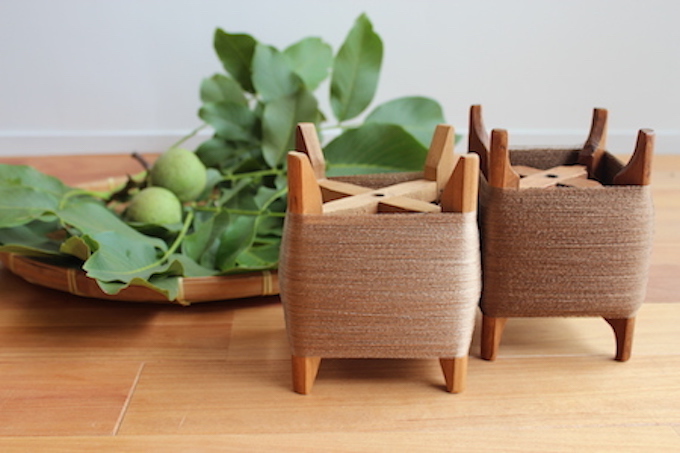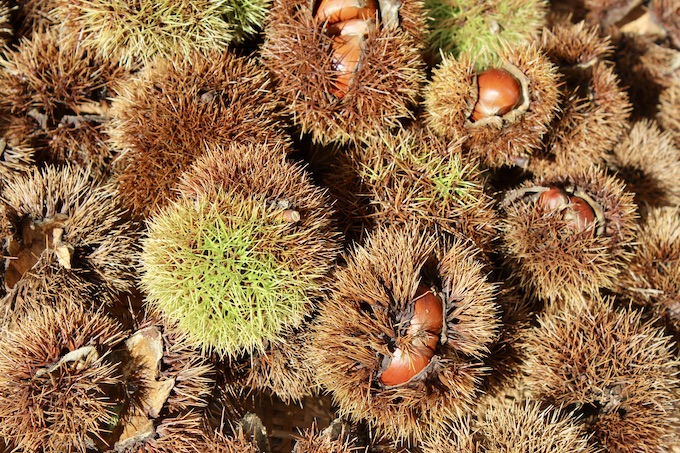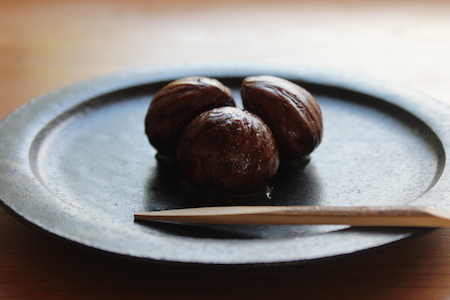I have started my weaving work in my new aterlier.
Weaving involves not just “weaving” but there is also a process of winding dyed threads around wooden frame, and making warp called “seikei” which is done before weaving with a loom.
In the temporary residence that I lived for more than a year after moving to the foot of Yatsugatake, I had been weaving kimono textile of which “seikei” was done in the former Kamakura atelier, so I have finally come to the point where I am able to begin a series of work for weaving.
In addition to be doing “seikei” after a long time, it was slightly a complex vertical strip pattern, but my hands moved without failure.

Nearly 20 years ago, when I started a training in a studio in Kyoto, I was just failing all the time.
Since I couldn’t do the work of dyeing and weaving properly that was entrusted to me by the mistress, I put my mistress and elder fellows to trouble and I felt very sorry for that.
The frustration that I knew what to do in my head and yet my hands wouldn’t catch up.
Every night when I came back to my old apartment room where I lived at that time, I got into the futon and cried.
At that time, I had an opportunity to talk to an acquaintance who was a sculptor with a long carrier, and there was one time I asked, “Do you not fail? What do you do when you fail?”
The sculptor told me that “failure will no longer be failure”, but it wasn’t until years later that I understood its meaning.
While I was doing the work, I had become able to solve the problems that I did not know what to do before.
At another time, I sensed before it seemed to fail and made modification.
I felt like I unconsciously understood the sculptor’s words “It is not that I don’t fail, but it will not be a failure.”
There is some misfortune I face while dyeing and weaving a piece of kimono textile.
When something unexpected happens, do I make it a failure?
Or do I take it as an opportunity and make it even more attractive piece of work than planned? That is the depth of handwork, and it is where the creator’s skilled is tested.
I suppose training is the way to keep being the best.

It was a walnut tree in the garden that I dyed for the first time at my home cum atelier where I moved during the rainy season.
How delighted I was to see the walnut tree in my garden which I could not find so often in Kamakura.
When dyed with vigorous summer green leaves, it turned out like the colour of walnut shell.
After dyeing over and over, it was dyed deep dark brown.
I’m going to use a few hanks that was dyed in this summer for a vertical strip pattern and I will dye threads for a roll of kimono textile by next year and try to weave a plain textile.

I picked up chestnuts with my daughter on a holiday where I can spend time slowly.
She remembered about the picture book “Guri to Gura” (written by Rieko NAKAGAWA, illustrated by Yuriko OMURA, published by Fukuinkan Shoten Publishers Inc.) that I was just reading to her.
She recalled the phrase where the field mice Guri and Gura, who love to cook and eat, went to the forest and said “when we have picked up chestnuts full in the basket, let’s boil them soft, and make cream”, and she was picking up the chestnuts delightedly.
And for my part, I was picking up chestnut burs saying “Ouch!”
I immediately dyed with chestnut burs and I made shibukawani* with a nut part instead of cream.
My autumn work has started.

*shibukawani: chestnuts boiled in sugar syrup without removing the astringent coat.
